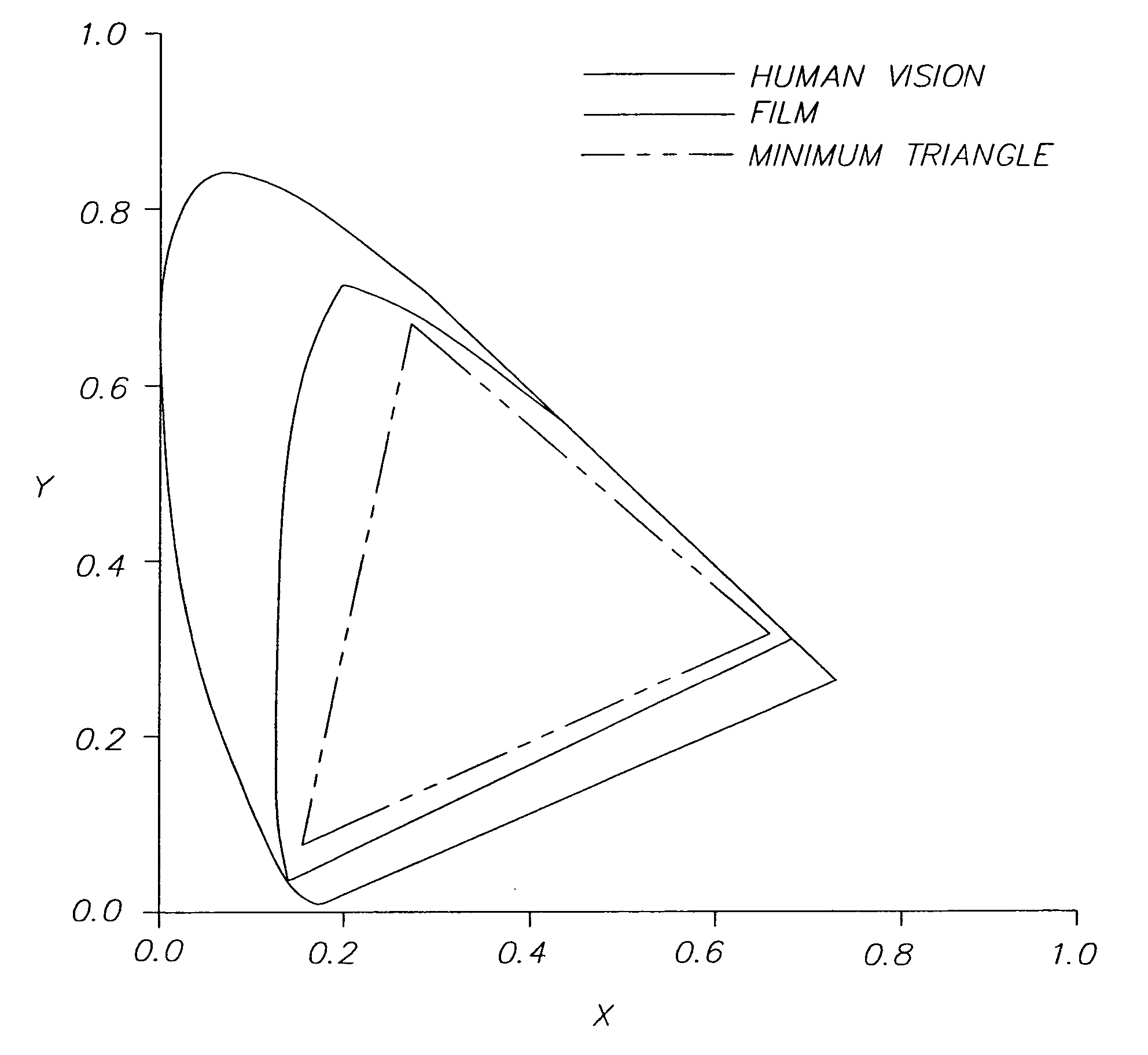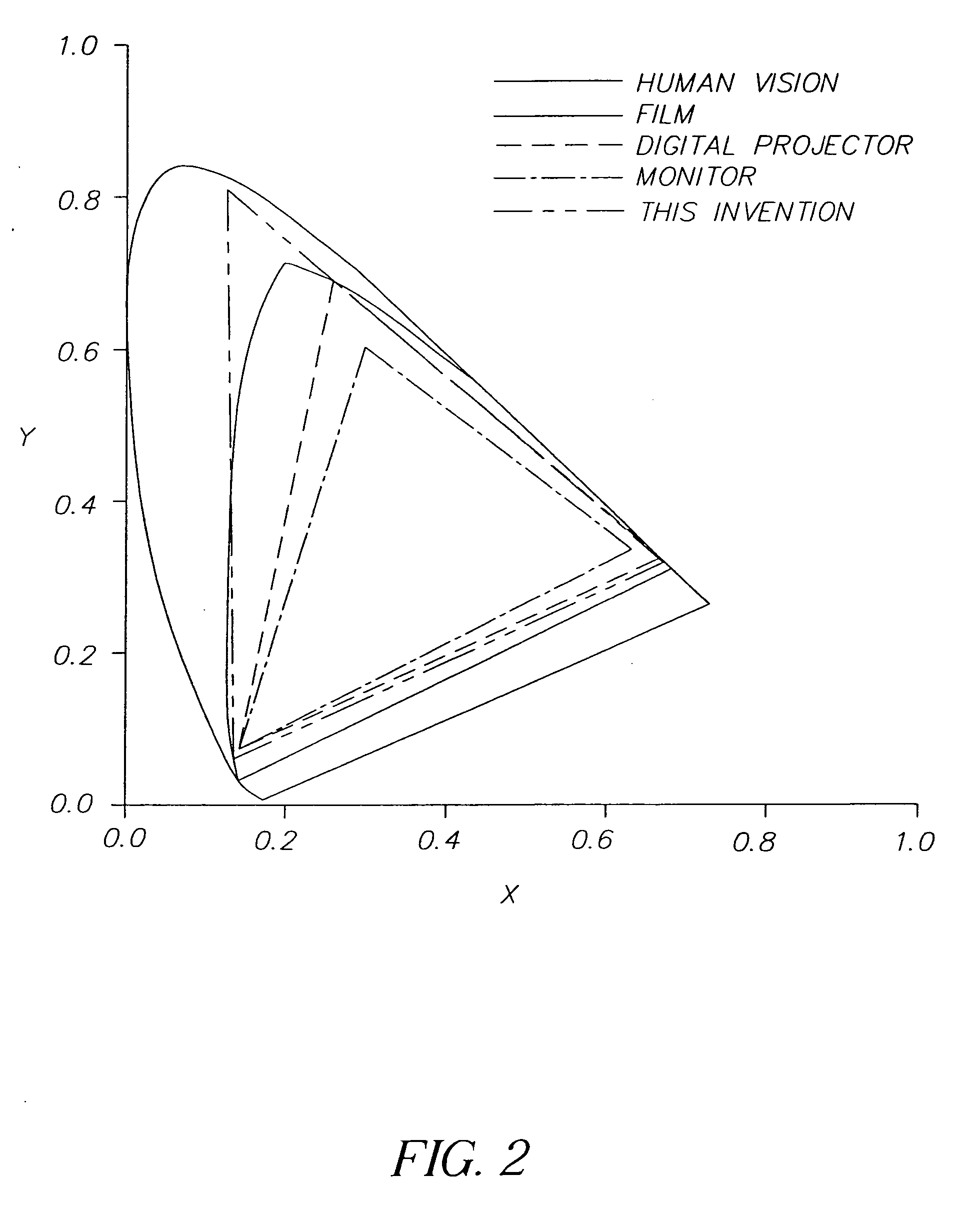Method and apparatus for increasing color gamut of a three color primary additive display device
a color display and additive technology, applied in the field of display systems, can solve the problems of not reaching the maximum saturation, reducing the color quality of the film print that came from the digital intermediate process, and little that can be done to increase the color gamut of the monitor, so as to achieve the effect of reducing the cost of production
- Summary
- Abstract
- Description
- Claims
- Application Information
AI Technical Summary
Benefits of technology
Problems solved by technology
Method used
Image
Examples
Embodiment Construction
[0017]FIG. 1 showed the problem faced today—that a monitor or a digital projector has a color gamut considerably smaller than the color gamut of projected motion picture film.
[0018]FIG. 2 shows one aspect of the invention that gives a digital projector a color gamut much closer to the color gamut of motion picture print film. In FIG. 2, the dark dotted line represents the color gamut of a three color additive primary device with primaries with the chromaticity coordinates shown in Table 2.
TABLE 2Chromaticity Coordinates, x and y, of three primaries of this invention.PrimaryxyRed0.68510.3148Green0.13230.8063Blue0.14120.0456
[0019] These primaries can be made from incoherent light such as Xenon light and an optical wavelength selector (i.e., selecting a narrower range of wavelengths to provide a larger color gamut), for example, three dichroic filters that cut sharply at the wavelengths shown in Table 3, or a beamsplitter either alone or in combination with the set of large gamut fi...
PUM
 Login to View More
Login to View More Abstract
Description
Claims
Application Information
 Login to View More
Login to View More - R&D
- Intellectual Property
- Life Sciences
- Materials
- Tech Scout
- Unparalleled Data Quality
- Higher Quality Content
- 60% Fewer Hallucinations
Browse by: Latest US Patents, China's latest patents, Technical Efficacy Thesaurus, Application Domain, Technology Topic, Popular Technical Reports.
© 2025 PatSnap. All rights reserved.Legal|Privacy policy|Modern Slavery Act Transparency Statement|Sitemap|About US| Contact US: help@patsnap.com



